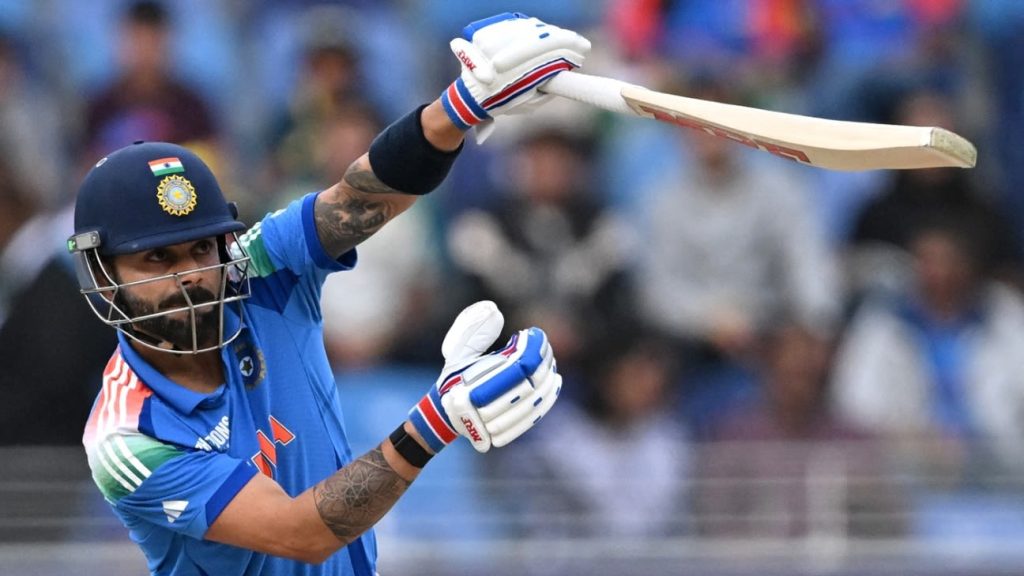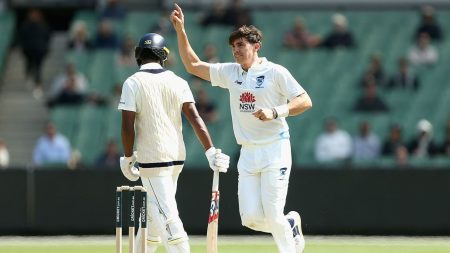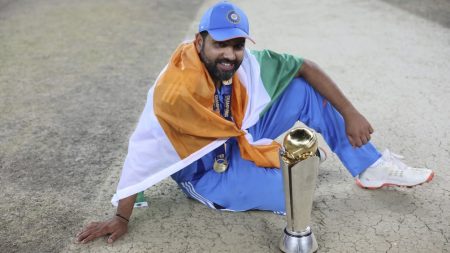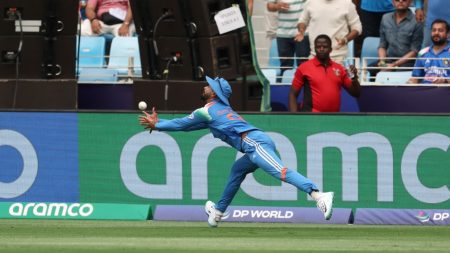A Thrilling Semi-Final in Dubai
The thrilling semi-final of the Champions Trophy in Dubai saw India edge past a depleted Australian side by five wickets, setting up a final clash in the same venue. Despite a valiant effort from the Australians, India’s superior quality and experience ultimately prevailed. The match was a rollercoaster, with several pivotal moments that could have shifted the momentum in Australia’s favor. However, it was India’s consistent performance, particularly from their veteran players, that ensured they maintained control.
Virat Kohli’s Masterclass
Virat Kohli was once again the linchpin of India’s batting line-up, his 84 runs setting a strong foundation for the chase. While he fell short of his coveted century, Kohli’s innings was a testament to his mastery in one-day cricket. He managed to score at a steady pace, navigating the tricky track and the Australian bowlers with ease. Kohli’s innings pushed his ODI chase tally over the 8000-run mark, a remarkable achievement that underscores his reliability in high-pressure situations. His uncharacteristic miscue while attempting a big hit was a moment of rare vulnerability, but by then, India had already brought the required run rate down to a manageable 40 off 44 balls.
KL Rahul and Hardik Pandya’s Late Surge
The final innings was a nail-biter, with KL Rahul and Hardik Pandya playing crucial roles in sealing the victory. The duo combined for a rapid finish, hitting five sixes and three fours between them. Rahul, who had previously played a pivotal role in a similar chase during the 2023 World Cup in Chennai, once again proved his mettle by finishing with a six over long-on off Glenn Maxwell. The late surge by Rahul and Pandya demonstrated the team’s ability to adapt and accelerate when needed, even as they maintained a high level of consistency throughout the innings. This partnership ensured that India crossed the line with a few balls to spare, showcasing their depth and resilience.
India’s Fielding and Running Prowess
India’s victory was not just built on big hits but also on their superior fielding and running between the wickets. They faced only 124 dot balls compared to Australia’s 153, and ran 158 runs between wickets compared to Australia’s 129. This discipline and ability to rotate the strike effectively were crucial in managing the chase. The Indian batters, led by Kohli, consistently found gaps and ran efficiently, making it difficult for the Australian bowlers to build pressure. The contrast in dot-ball percentages between the two teams’ spinners—India’s at exactly 50% and Australia’s at just over 39%—highlighted the control and effectiveness of India’s bowling attack.
Australia’s Promising Start and Crucial Wickets
Australia’s innings started promisingly, with three of their batters—Travis Head, Steven Smith, and Alex Carey—playing innings that could have been match-winning on another day. Head, who was put down by Mohammed Shami in the first over, initially struggled with the slow surface but eventually found his rhythm, scoring 39 runs off 32 balls before falling to Varun Chakravarthy. Smith, known for his technical brilliance, compiled a smart 73 runs, forming significant partnerships with Head, Marnus Labuschagne, and Carey. However, his dismissal, trying to drive a full toss from Shami, marked a critical turning point in the match. Carey, who came in at a tricky juncture, counterattacked brilliantly, scoring 60 off 56 balls with a mix of sweeps and lofts. His risky second run, though, led to a brilliant direct hit from Shreyas Iyer, ending his promising innings and dashing Australia’s hopes of a higher total.
India’s Spinners Dominate
India’s decision to stick with a four-spinner strategy on a bone-dry pitch paid off, even though the surface turned out to be slow and low rather than offering significant spin. The Indian spinners—Axar Patel, Ravindra Jadeja, Yuzvendra Chahal, and Varun Chakravarthy—displayed better control and restricted the scoring areas more effectively than their Australian counterparts. They kept the pressure on the Aussie batters, ensuring that the total remained within reach. Adam Zampa, the only proven spinner in the Australian lineup, managed to take two wickets, but the overall slower pace of the other spinners limited their impact. India’s ability to rotate the strike and take singles from deep fielders further reduced the effectiveness of Australia’s bowling.
Reflecting on the Match
In the end, the match was a microcosm of the two teams’ strengths and weaknesses. India’s depth, fielding, and strategic batting were key factors in their win, while Australia’s inability to capitalize on crucial moments and their less effective spin attack cost them. The dropped chances, particularly those of Head and Smith, loomed large in the post-match analysis. Despite the early setbacks and a challenging chase, India’s composure and experience shone through, ensuring they will face the winners of the other semi-final in the Champions Trophy final. This victory in Dubai is a testament to the team’s ability to perform under pressure and their unwavering focus on the game’s fundamentals.











